The Standing Leg Routine That Doubles as a Strength Test
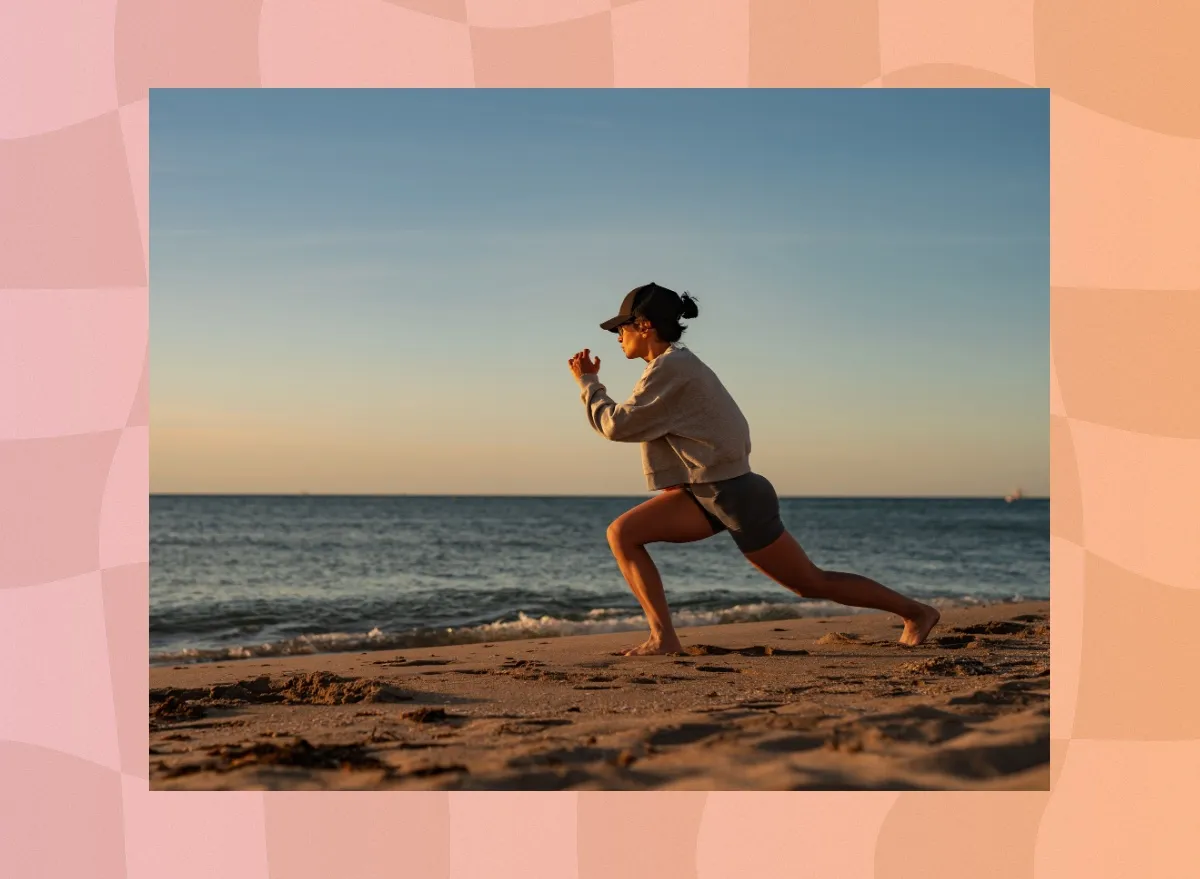
Think your legs are strong? This workout will either confirm it or call you out. These standing movements don’t just build muscle; they test how well you control your body under pressure. You’ll challenge balance, coordination, and unilateral strength using nothing more than your bodyweight or a pair of dumbbells. If you rely on momentum or lose your form when things get tough, this routine will expose it. There’s no machine to hide behind—just you, gravity, and grit.
This workout doubles as a performance test and a builder of real-world strength. You’ll tackle single-leg exercises like Bulgarian split squats, tempo reps, and explosive finishers to push your limits. Along the way, you’ll reveal imbalances, improve muscular endurance, and build leg strength that carries over to sport, daily life, and more advanced training. All you need is space to move, willingness to focus, and a mindset ready to work.
What Makes a Great Strength Test While Training?

A great strength test does more than check how much weight you can move. It reveals how well your body works under pressure, especially when balance, coordination, and muscular endurance are put to the test.
Key traits of a great standing strength test:
- Challenges total-body control: You can’t rely on machines or momentum. Your entire body must stabilize and engage.
- Exposes imbalances: Single-leg moves like pistol squats clearly show if one side is stronger or more mobile than the other.
- Demands coordination and balance: Without these, your strength falls apart under fatigue or during complex movements.
- Builds real-world strength: Standing exercises are far more effective for sports, running, and everyday movements than seated lifts.
- Tests muscular endurance: It’s not just about one heavy rep—it’s about repeating reps with control and consistency.
- No hiding poor form: If you can’t maintain depth, balance, or posture, the movement calls you out.
The Standing Strength Test Workout

What you need: This routine requires minimal space and either your bodyweight or one to two dumbbells. You will need a box or bench for pistol squat progressions and Bulgarian split squats. Depending on the rest time between rounds, expect the workout to take 25 to 30 minutes.
The Routine:
- Pistol Squat to Box (3 sets of 5 reps each leg)
- Bulgarian Split Squat (3 sets of 8 reps each leg)
- Single-Leg Romanian Deadlift (3 sets of 8 reps each leg)
- Step-Through Lunge (3 sets of 6 reps each leg)
Directions:
Complete each exercise for the prescribed sets and reps. Rest for 30 to 60 seconds between exercises and 60 to 90 seconds between rounds. Perform 3 total rounds. Focus on balance, control, and full range of motion. Move slowly on each rep’s eccentric (lowering) portion and avoid using momentum to complete reps.
How to Do It:
Pistol Squat to Box
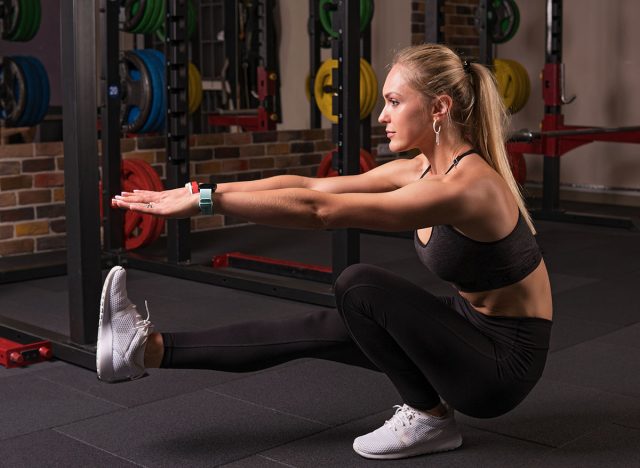
How to do it:
- Stand tall with one foot elevated in front of you.
- Keep your chest tall and arms extended forward for balance.
- Lower yourself under control to a box or bench behind you.
- Lightly touch the box, then drive through the standing heel to return to the start.
- Keep your non-working leg extended and your knee tracking in line with your toes.
Bulgarian Split Squat
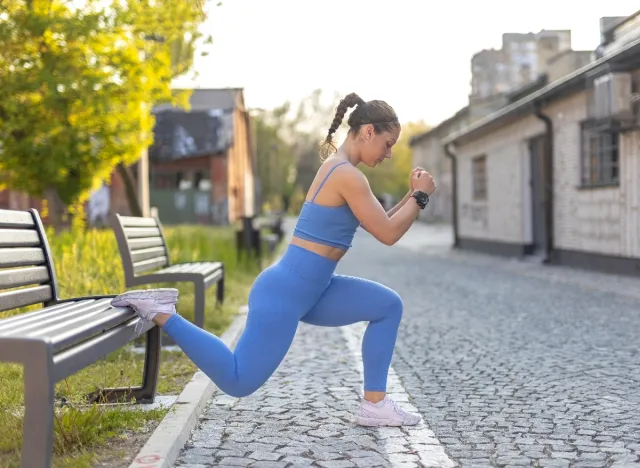
How to do it:
- Stand a few feet in front of a bench or box.
- Place the top of your back foot on the bench.
- Lower your hips straight down until your front thigh is parallel to the ground.
- Keep your chest upright and your front knee tracking over the toes.
- Push through the heel to return to the starting position.
Single-Leg Romanian Deadlift
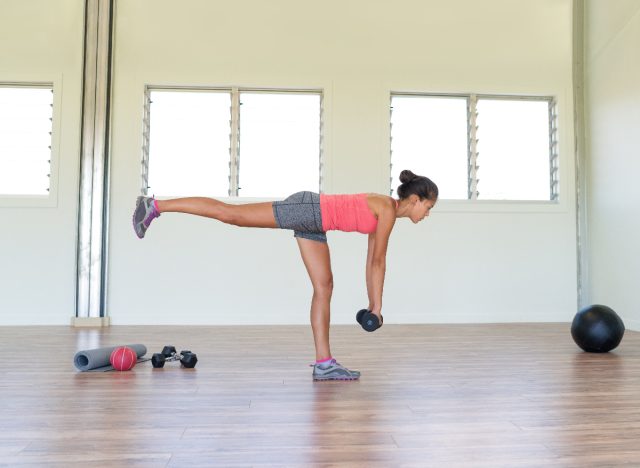
How to do it:
- Stand tall and shift your weight to one leg.
- Keep a soft bend in the knee as you hinge at the hips.
- Extend your non-working leg behind you for balance.
- Lower your torso until it is nearly parallel to the floor while keeping your spine neutral.
- Drive through the standing heel to return to the upright position.
Step-Through Lunge
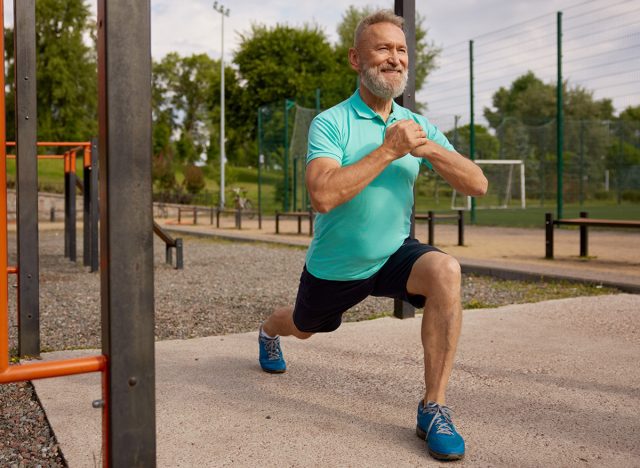
How to do it:
- Start standing with your feet hip-width apart.
- Step forward into a lunge, lowering your back knee close to the ground.
- Push back to standing, then immediately step into a reverse lunge with the same leg.
- Alternate forward and reverse lunges for all reps on one side before switching legs.
- Keep your core engaged and torso upright throughout.
How To Use This as a Strength Test
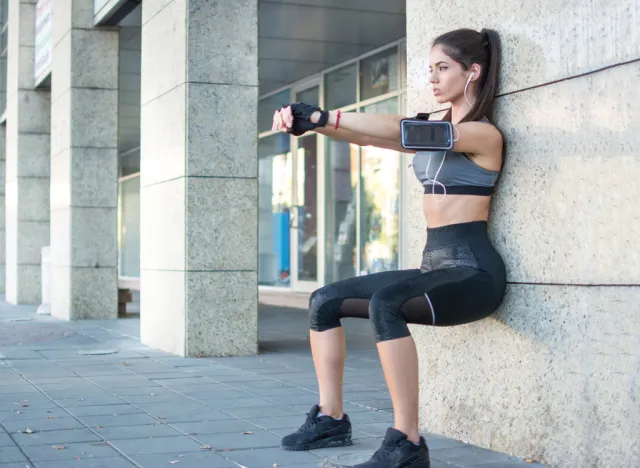
Each movement doubles as a test. Your performance reveals your current level of strength, balance, coordination, and muscular endurance. Use these indicators to track progress:
- Depth and control: Can you perform each rep without collapsing forward or losing balance?
- Side-to-side differences: Does one leg dominate or struggle with stability?
- Wall sit or timed holds (optional additions): How long can you hold under tension?
- Video yourself: Identify movement breakdowns or compensations.
Repeat the workout every 4 weeks. Keep a log of reps, form notes, and rest time to see how your strength improves.
Final Tips
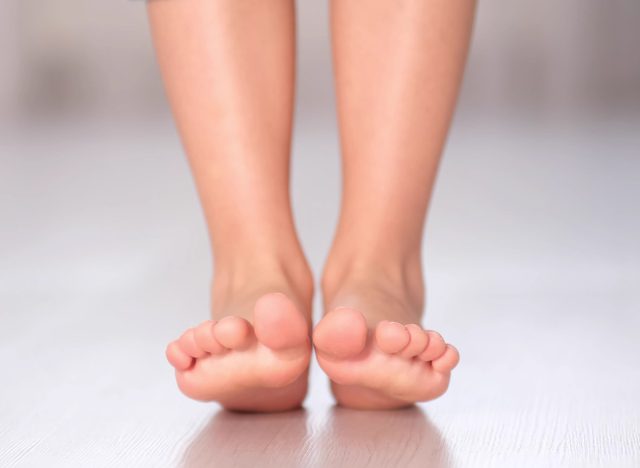
Before you dive in, keep these simple but essential tips in mind to get the most out of this workout and to ensure you’re truly testing strength, not just going through the motions:
- Control each rep from start to finish. Sloppy form hides weaknesses.
- Use a mirror or record video for immediate feedback and self-correction.
- Train barefoot or in flat shoes for better ground contact and ankle stability.
- Add resistance only after you can complete all reps with perfect form.
- Warm up before you start and cool down with light stretching to stay mobile and avoid injury.